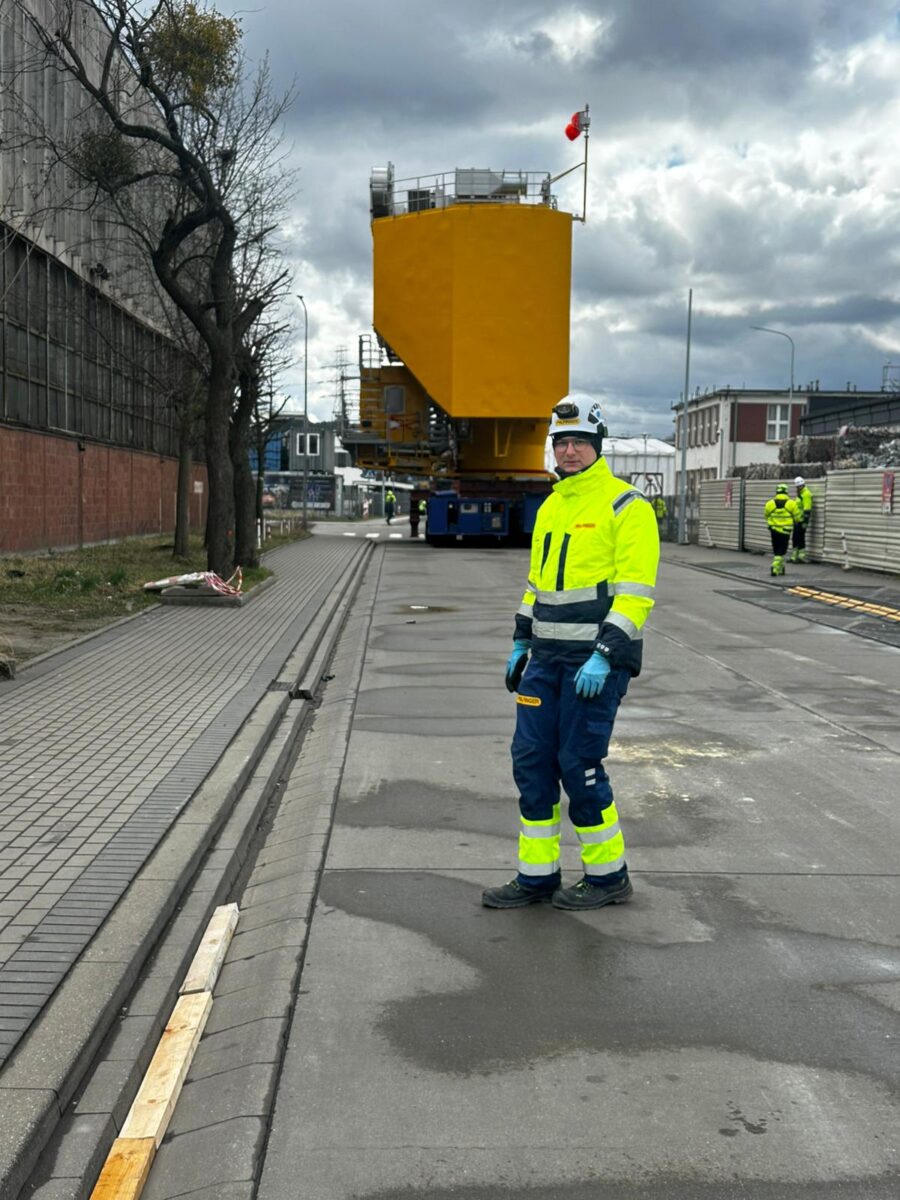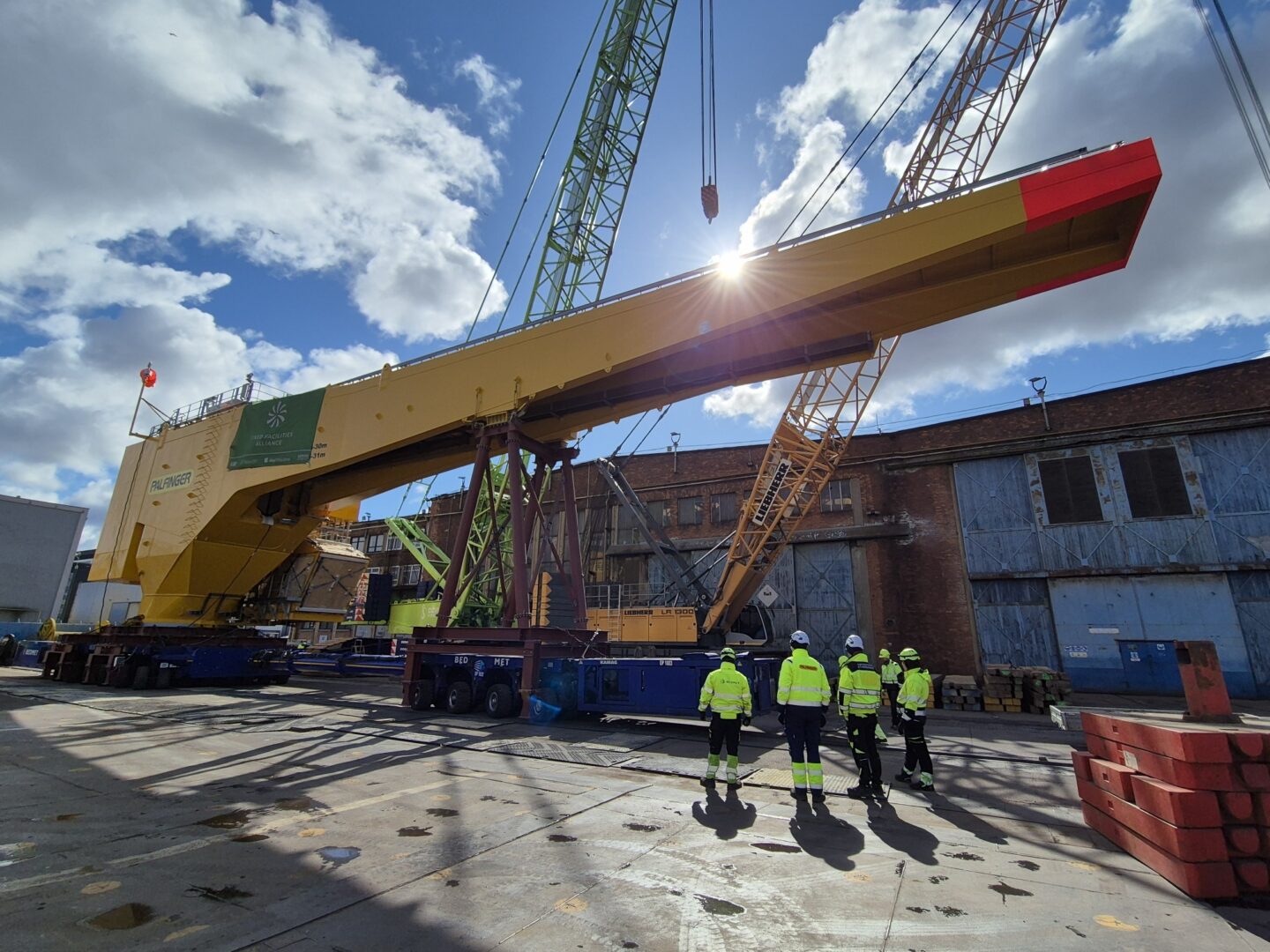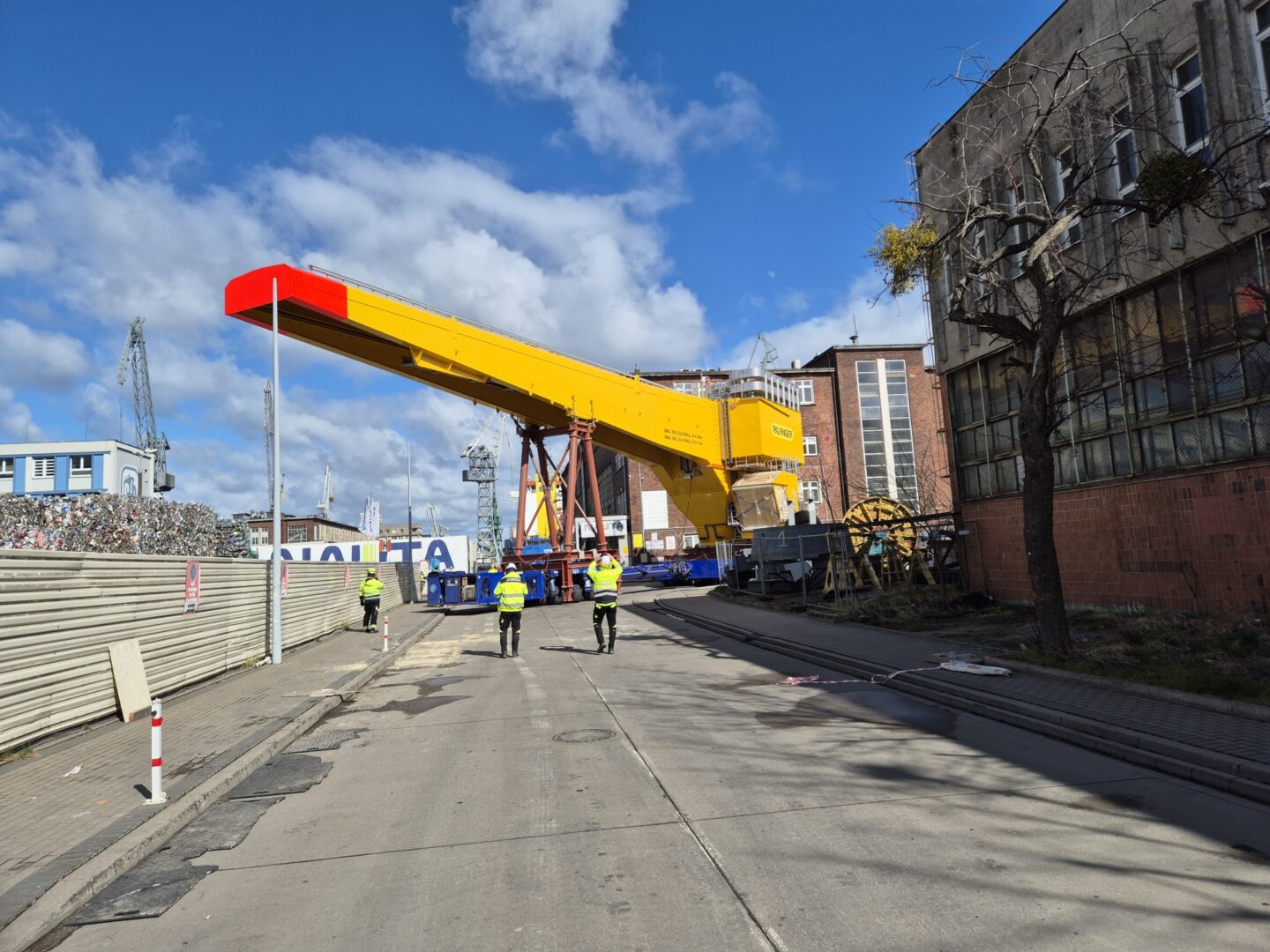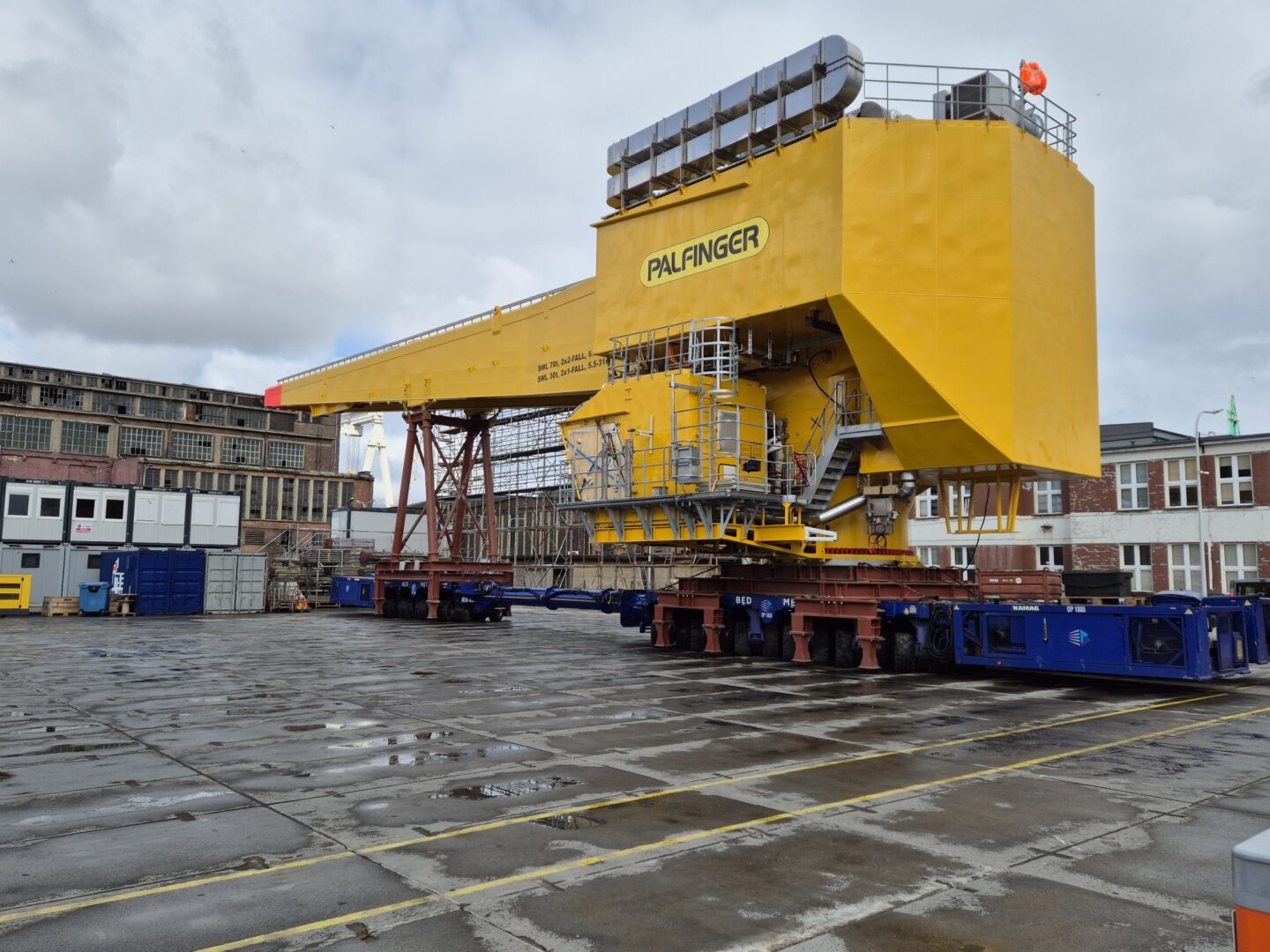Last Updated on May 22, 2025 by PALFINGER
As part of PALFINGER MARINE’s frame agreement as the main supplier of state-of-the-art, fully electric, and remote operated offshore cranes for long-time customer and partner Aker BP, we recently celebrated yet another project milestone. Our electric jib crane (DKJ), earmarked for the Hugin B platform, successfully completed its journey from the assembly site to the test stand, where it will be operated for the first time. We sat down with Thomes Imbert, Lead Project Manager, and Michael Lewandowski, Purchasing & Logistics Coordinator, to get an update on this groundbreaking project.
Driven by the ambition to rethink offshore crane technology, PALFINGER MARINE is setting the course for a new generation of cranes. The new fully electric jib cranes (DKJe), designed for future remote operation, are combining digitalization, automation, and environmental responsibility. They are built to withstand the harshest environments with no exposed components in the parked position and feature a fully integrated control system, that can be coordinated from an onshore location. Recently, the DKJe crane, earmarked for the Hugin B platform within the Yggdrasil area in the North Sea, successfully completed its assembly phase.
A COMPLEX ASSEMBLY PROCESS
“The DKJe crane was assembled at our subcontractor’s site in Gdynia. The process itself started towards the end of September 2024, and required more than 18,000 work hours”, Thomas reveals. This impressive number illustrates the complex nature of the product. Given the advanced safety and technology features of the DKJe model, this labor-intensive process comes as no surprise.
The assembly phase was successfully completed on schedule, a testament to our team’s expertise and meticulous planning
Transporting the crane to the test stand, located at a Gdynia-based facility operated by another subcontractor, marked the next crucial step managed by Michal and his team.
THE DKJE TRAVELS THROUGH TOWN

When asked about the journey across town, Michael is immediately reminded of the weather conditions. “We had some issues with strong winds on the weekend the move was scheduled. That made it more challenging to mobilize the crane for lifting,” he remembers. “It was thus even more important that we were fully prepared for all eventualities, with a plan B and C in the drawer. Given the DKJe’s high center of gravity and narrowness, risks associated with the tipping angle featured heavily in our considerations,” Michael explains. A 12-member team was tasked with the planning of the move. On the day, however, no less than 25 people were in action, including representatives of PALFINGER MARINE and Aker BP, the transport company, and the subcontractors.
The trip itself was not only complicated by the wind, but also by the fact that a lot of infrastructure was – for want of a better term – in the way. “We were forced to dismantle lamp posts, road signs, and even concrete blocks to clear the path,” Micheal recalls. “We had, of course, secured all the necessary permits in advance,” he adds. A particular challenging situation involved two trees that were not allowed to be cut down. Michael paints a vivid picture: “We spent a great deal of time plotting a course around these beautiful trees. We needed to mount the pavement to avoid them, meaning that this section of the sidewalk had to be reinforced and secured accordingly. In the end, we safely navigated around the trees, which made the efforts worthwhile.”
FROM VISION TO REALITY: DKJE READY FOR TESTING
Now that the DKJe has been installed on the test stand, it will soon be operated for the very first time. This marks a defining moment as we see the result of years of research and development brought to life.
Witnessing an assembled crane on the test stand is always a significant milestone, but it’s even more awe-inspiring when it involves a pioneering product like our jib crane.
“We will start the testing process in May. The aim is to finish our internal Factory Acceptance Test (FAT) in July, before moving on to the official FAT with the customer in August,” Thomas says. “All these tests, including the two FATs, will take place on the current test stand,” he adds. Thomas is eager to highlight the unique remote angle of this model’s testing process: “Before we start remote testing, we need to complete base scope testing. The latter should be done over the summer. The planning of the remote testing campaign is taking place as we speak and is scheduled for the third quarter of the year. The crane is set to be ready for delivery by the end of the year.”
MUCH MORE GOING ON
The DKJe for the Hugin B platform, taking the spotlight right now, is just one of three jib cranes contributing to the Aker BP framework agreement. “At the moment, many things are happening simultaneously,” Thomas explains. “The DKJe for Fenris field was the very first of its kind to be on the test stand in December 2024, its Factory Acceptance Test (FAT) is scheduled for June 2025. Meanwhile, the third and largest DKJe crane, built for the Munin platform, is now entering the assembly stage. These are busy, yet truly exciting times ahead for us.”
Stay tuned for more information about the next project-related milestones. The story is far from over, with many exciting chapters yet to come!




